Creating a Winning UX Content Strategy: Best Practices & Tips
Written by David L Hicks – August 28th, 2025
Your audience and customer base are the most crucial factors in determining the visibility and overall growth of your content. Making them happy can sometimes be a challenge because their interests, as well as how they view and interact with your content, change over time.
This is where user experience (UX) becomes crucial to content, content strategy, and its success. Creating content that not only delivers value but also provides an enjoyable experience for your audience helps keep them engaged and interested.
In this guide, we’ll explore proven strategies for developing a UX-focused content approach that keeps your audience engaged while driving sustainable growth. You’ll also learn actionable techniques that transform casual viewers into devoted followers.
Table of Contents
ToggleWhat is a Content Strategy?
Before developing a UX content strategy, it is essential to understand what a content strategy entails. A content strategy is a plan that guides the ideation, creation, distribution, and optimization of your content.
Through your content strategy, your content achieves specific objectives and goals, meeting the needs of both potential and existing target audiences. The content strategy also provides the overarching framework for all content efforts, including video, blog, and social media.
What is UX (User Experience)?
UX (user experience) refers to the overall experience and satisfaction a person has when interacting with different aspects of your brand. They can include, but are not limited to, the following:
- Website
- Product (Example – Application)
- Service
- Content
- Digital platform
UX encompasses everything from ease of use, visual components, content readability, and functionality. UX is important because it directly impacts user satisfaction, engagement, and retention.
Having a strong UX leads to success in many key performance indicators (KPIs), which will help your overall content strategy’s ROI, including:
- Higher conversion rates
- Increased customer loyalty
- Reduced support costs
Ultimately, you’ll achieve business success when your KPIs are moving in the right direction. In contrast, poor UX drives visitors away and can damage brand reputation over time.
What is a UX Content Strategy?
A UX content strategy is exactly what the name implies: it’s a content strategy that focuses specifically on UX. Content strategies are flexible in that they can be scaled up or scaled down to focus on specific aspects of your content, including:
An effective UX content strategy targets user needs and aligns with brand messaging to enhance your users’ experience. The better your users’ experience, the better the chances of improving user retention. An effective UX content strategy also ensures:
- Alignment to user needs
- Boosts conversions
- Alignment to business goals
- Helps eliminate gaps between the user needs and business goals.
- Increase in user engagement
Your content strategy must also offer consistency in tone and style. If you’re able to do that, it will foster brand recognition and build trust with your audience.
I value the importance of UX in my content strategy for this website by keeping my website’s design simple and effective. At least for now, I am staying away from being flashy and maintaining consistency in the appearance and design of my content.
Content Audit and Planning
A successful content strategy starts with a clear understanding of what you already have and where you need to go. This is where content audit and planning come into play, forming the backbone of an effective UX content strategy. If you don’t have content, then this part of the process occurs once you have a content inventory to audit. The place of audit planning in your process depends on the existing content.
Conducting a Content Audit
Conducting a content audit is a foundational step for any content strategist aiming to build an effective UX content strategy. This process involves a comprehensive review of your existing content across all of your platforms, whether it’s your website, social media channels, or marketing materials. By systematically evaluating your content, you can determine what aligns with your business objectives and what falls short.
Using analytics tools like Google Analytics, content strategists can evaluate the effectiveness of existing content. These insights reveal which pieces are driving user engagement and which may be outdated or underperforming. A thorough content audit also checks for consistency, accuracy, and relevance, ensuring your UX content delivers value to your target audience. Ultimately, this process enables you to make data-driven decisions that optimize your content, close gaps, and support your overall business objectives.
Planning and Developing Your UX Content Strategy
Proper planning is essential in the early stages of your UX content strategy, as it helps identify potential issues, allocate responsibilities, and ensure all necessary details are considered from the start. This process involves several key tasks.
Align with UX Content Strategy with Business Objectives and Goals
Your UX content strategy must align with your organization’s business objectives and goals. If you’re a solopreneur, it shouldn’t alter your approach. I am a solopreneur, and I’ve based my UX content strategy on objectives and goals I’ve developed internally.
Develop SMART Goals
Once you’ve developed your objectives, whether solo or through an organization, you need to establish goals. Your goals should be SMART goals. SMART goals are classified as goals that are specific, measurable, achievable, relevant, and time-bound.
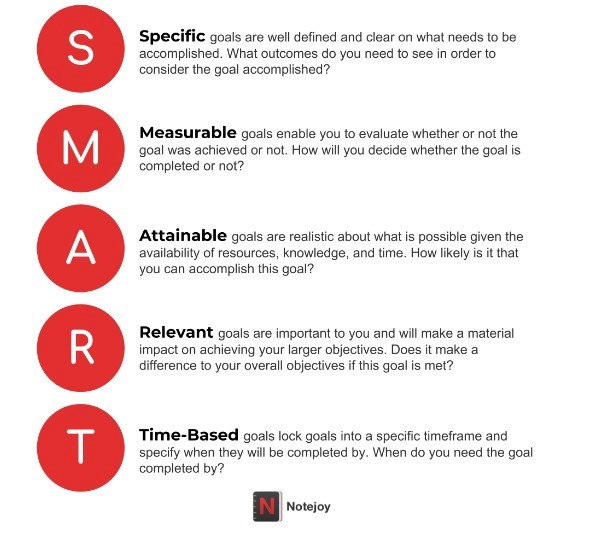
(Source – Notejoy)
The SMART goal-setting framework helps individuals and organizations create something that is clear and attainable. SMART goals help you avoid being directionless.
Perform User Research to Enhance Your UX Content Strategy
User research is extremely important for designing user-friendly experiences. UX research plays a crucial role in creating accessible, inclusive, and effective user experience strategies by informing design decisions and ensuring that products meet the diverse needs of users.
The reason it’s essential is that it helps give you insight into your users’ behaviors and needs. Investing time in user research can prevent costly mistakes by ensuring that the correct problems are addressed early on.
User research offers many benefits to the user experience, including:
- Identifies pain points and friction areas that users encounter when interacting with your content
- Uncovers user motivations and decision-making processes
- Validates assumptions about user preferences through real data
- Discovers content gaps and opportunities
- Improves content accessibility and usability by understanding how different user groups interact with your content
- Identifies key interaction points where users engage with your digital product, helping to optimize the user journey
- Uncovers user motivations and decision-making processes
Several types of research methods can help you reap the benefits previously listed. Here are a couple of recommended research methods that can help better understand your users:
User Interviews and Focus Groups
User interviews and focus groups provide an opportunity to gain a deeper understanding of your audience. They also help you gather qualitative insights about audience experiences, preferences, and challenges with your content. For example, you can request that a group of users interact with your content, and then ask them a series of follow-up questions after the session. For example:
- What was your first impression when you landed on our homepage?
- Which section of the content was most confusing or unclear to you?
- What information were you looking for that you couldn’t find easily?
- How would you describe this experience to a friend?
- What would prevent you from completing this task or taking the next step?
What makes user interviews and focus groups effective is that you control the questions and the flow of the sessions. Based on your line of questions, you dictate the directions of the session.
Leverage Analytics Tools
Being able to leverage analytics tools to help improve and speed up your analysis process helps with the development of your content strategy. Fortunately, there are many tools available to you. Using tools like Google Analytics and Hotjar to track essential metrics, such as user behavior patterns, click-through rates, and content engagement metrics, helps gain valuable visitor insights.
Surveys and Questionnaires
The most straightforward research methods to employ are surveys and questionnaires. Surveys and questionnaires are the easiest to develop because you can create them online and then send them to targeted portions of your audience via email or from a pop-up screen on your website. You can scale up and down the scope of your surveys and questionnaires based on the following:
- User satisfaction
- Content preferences
- Demographic information
The more information you gather from your audience, the better your chances of improving your UX content strategy.
Perform A/B Testing
Performing tests of your content’s UX is another excellent way to gather intel to help improve your UX content strategy. A/B testing specifically can help. The process of A/B testing involves testing different versions of content, layouts, or messaging to determine which approaches resonate best with your target audience. The version that performs the best is the one you would incorporate into your strategy.
All in all, data-driven decisions made through user research can lead to more effective and relevant design solutions.
Develop User Persona Charts
Creating user personas is essential for developing an effective UX content strategy. A user persona helps you visualize target users and their content needs. The more you know about your user base, the better you can cater to their needs from a UX standpoint.
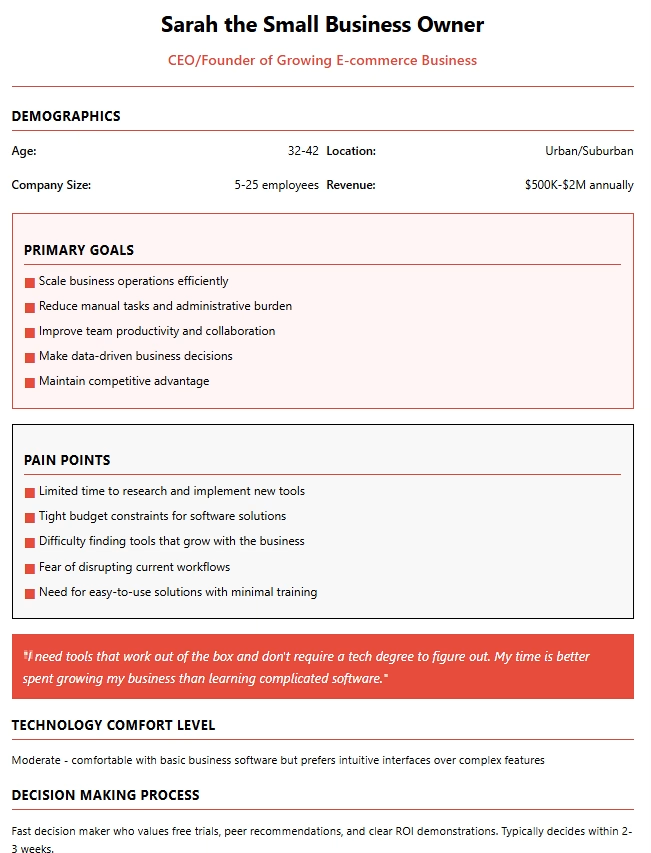
Mapping User Journeys for Effective Content
After developing your user persona chart, you should build a user journey map. A user journey map is a visual representation that outlines the steps, emotions, and touchpoints a user experiences while interacting with your product or service.
Performing this task will help you develop effective and engaging content for your audience, as it reveals exactly what information users need at each stage of their journey. It allows you to create targeted content that addresses their specific questions, concerns, and motivations. Additionally, mapping the journey ensures users can easily find relevant information at each stage, improving their overall experience.
An example of a user journey map is shown below:
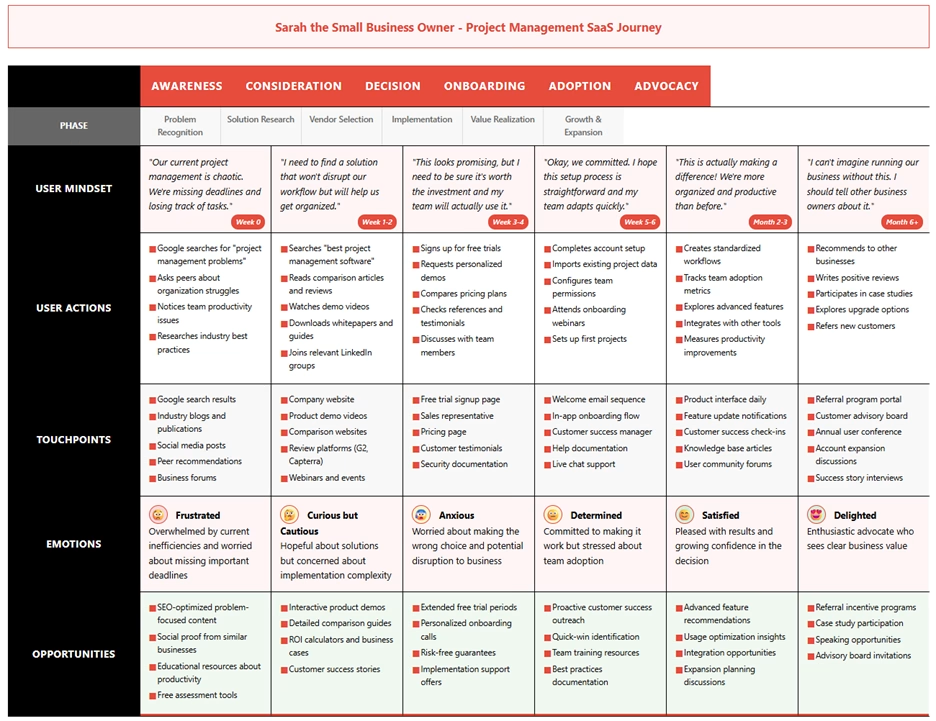
Your user journey map is a visual framework that outlines the touchpoints of your content, providing a clear view of the user’s experience.
Creating High-Quality Content
Now that you’ve taken the necessary steps to plan and develop your UX content strategy, it’s time to execute it and create high-quality content. High-quality content is critical for an effective UX content strategy; it dramatically impacts the following:
- Traffic
- User retention.
- Improves the user experience
- Enhances usability
Your content messaging should align with your brand standards to create a cohesive experience. High-quality content has several meanings, but in the context of the user experience, high-quality content must align with the following:
- Be easy to read and understand
- Include metrics
- Creates content consistent with brand voice and tone guidelines
- A consistent brand voice builds trust and forges deeper connections with users
- Matches brand persona
Your high-quality content must be relevant and address audience needs. Without addressing your audience’s needs, you will be unable to retain users. Content that is unable to address audience needs decreases user retention. One example of the user experience is speed. Sites that load in one second convert 3x better than sites that load in five seconds.
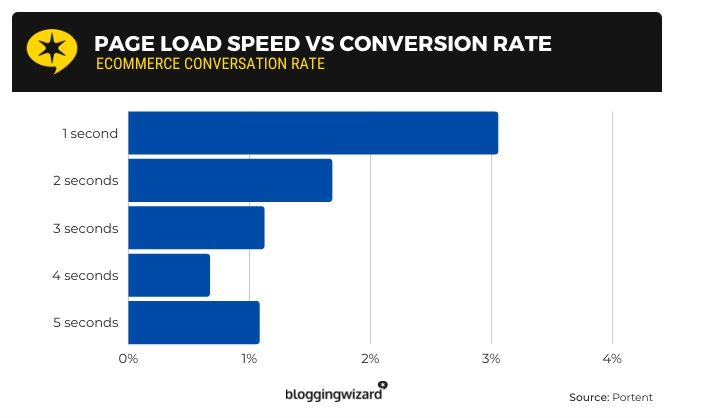
(Source – Blogging Wizard)
UX Content Optimization
As you develop content based on your UX content strategy, it’s essential to create a content calendar. Your content should never be considered a one-and-done task, meaning you write, publish, and then leave it out there. Content should be reviewed and updated periodically, at least annually, and you should regularly review analytics and content performance to inform future improvements.
The content calendar not only helps with managing ideation, development, and distribution, but also facilitates scheduling updates to your existing content as needed. There are content calendar/scheduling tools that can help with managing your content lifecycle, including the critical maintenance phase. During the maintenance phase, review, update, and remove outdated content to maintain site relevance and ensure SEO health.

Updating content, also known as optimization, is a crucial step in ensuring the success of your content’s UX. This is because it enables you to make updates to the content, improving your UX based on research, user interaction statistics, and feedback.
Integrating Content Strategy with UX Design Process
Your content strategy shouldn’t exist in a vacuum; it needs to work hand-in-hand with your overall UX design process. Think of it as creating a seamless conversation between what users see and what they read.
When your content team collaborates closely with UX designers from the outset, you avoid the common problem of great design with poor content or excellent writing that doesn’t align with the user interface. This integration ensures that every word, button label, and piece of microcopy contributes to a smooth user experience that feels intentional and cohesive.
Ensuring Accessibility and Inclusivity
Making your content accessible isn’t just the right thing to do; it’s a smart business move that expands your reach to all users. Start by writing in plain language that’s easy to understand, avoiding jargon that might confuse people or exclude those with different educational backgrounds.
Use proper heading structures, alt text for images, and ensure your color choices don’t rely solely on color to convey important information. When designing your site, ensure that interactive elements, such as buttons, links, and sliders, are accessible and properly labeled so that they can be used by people with disabilities and those using assistive technologies.
Consider users with disabilities, non-native speakers, and different cultural contexts when crafting your content. Simple changes, such as using descriptive link text instead of “click here,” can make a huge difference in creating an inclusive experience that works for everyone.
Style Guide and Governance
A well-crafted content strategy doesn’t just focus on what you say; it also ensures that you say it consistently, no matter where your content appears. This is where a robust style guide and governance framework come into play.
Establishing a Content Style Guide
Establishing a content style guide is crucial for maintaining consistency in content creation, publication, and management across various platforms. A style guide acts as a blueprint for your brand’s voice, tone, and language, ensuring that all content professionals are on the same page and delivering a seamless user experience.
A comprehensive style guide outlines publishing standards, including formatting, grammar, and syntax, so that every piece of content—whether it’s a blog post, product description, or social media update—reflects your brand’s identity and values. This shared understanding helps prevent irrelevant content and supports your brand reputation by ensuring consistency and high quality across all touchpoints.
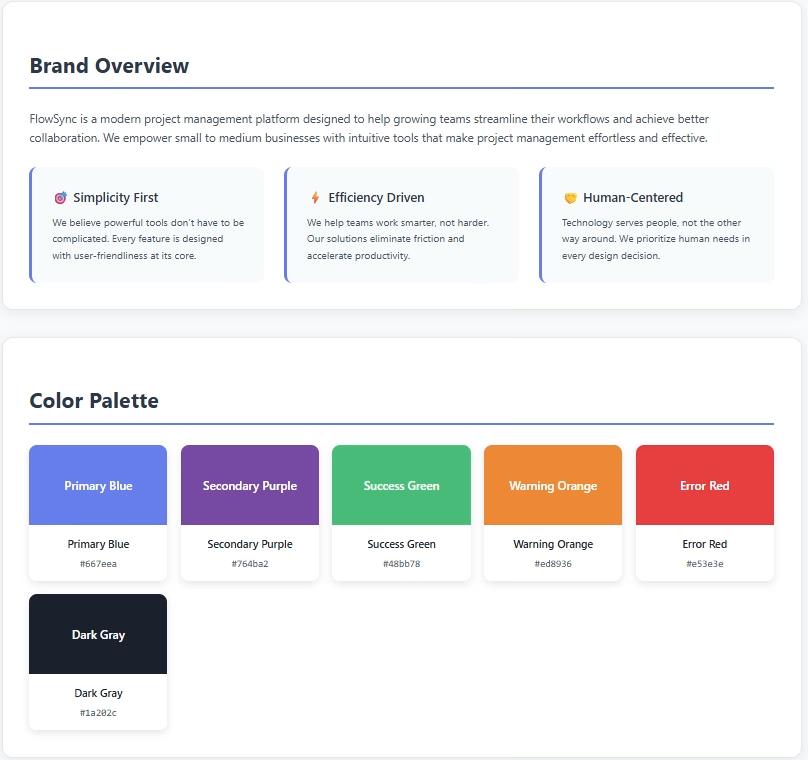
Regularly reviewing and updating your style guide is crucial. As your goals evolve and your audience’s needs change, your style guide should adapt to remain relevant and effective. By doing so, content strategists can streamline the content creation process, reduce the risk of outdated content, and ensure that every piece of content contributes to a positive user experience and supports your overall content strategy.
Conclusion
Creating a successful UX content strategy isn’t just about writing great content; it’s about understanding your users and designing experiences that truly serve their needs. By aligning your content with your goals, conducting thorough user research, and integrating your strategy with the overall design process, you’re setting yourself up for long-term success. Remember that UX content strategy is an ongoing process that requires regular optimization and updates based on user feedback and analytics data.